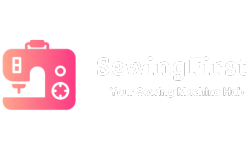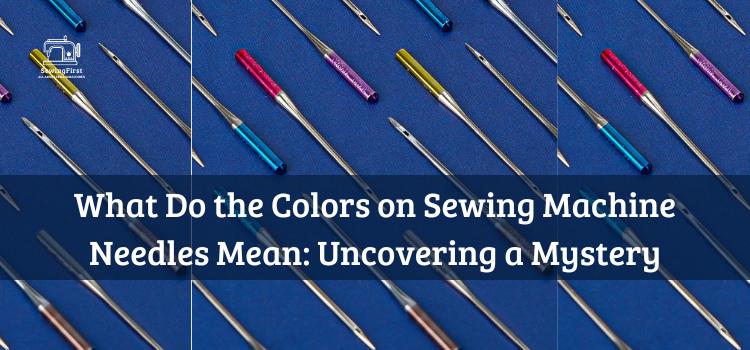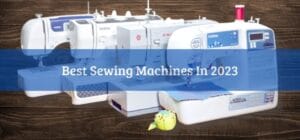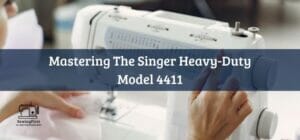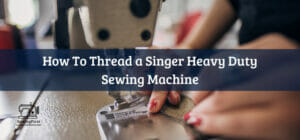The sewing machine needle is a critical component of any project. But what do the colors on them mean? Do they make a difference to your creations? If you’ve ever wondered why some needles are colored differently than others, you’re in for a treat! Unraveling this mystery can take your projects from ordinary to extraordinary – but first, let’s explore what it all means.
Have you ever stopped and thought about why there are different colors on these small yet mighty pieces of equipment? It turns out that each color has its own set of distinct characteristics, allowing sewers to customize their projects based on thread thickness, fabric type, and stitching style. So if you want to get creative with your next garment or quilting endeavor, understanding the meaning behind the colors can be invaluable.
Ready to find out what do the colors on sewing machine needles mean and to discover the significance of every hue and how it can help bring your creation to life like never before!
Related Topic: How To Tell If Your Sewing Machine Needle is Dull? Check This Before You Sew!
Table of Contents
ToggleWhat Do The Colors On Sewing Machine Needles Mean?
When it comes to sewing machine needles, the colors are an important indicator of needle type. Depending on which color is used, this can tell you a lot about what kind of fabric your needle is intended for. Generally speaking, blue-colored needles are for lightweight fabrics, while yellow and green indicate medium-weight fabrics.
Red and orange typically mean heavy-duty materials like denim or leather. Knowing the meaning behind the colors can help you choose the right needle type for whatever project you’re working on.
Colors aren’t the only way to identify a specific type of needle, however; they also have different sizes that will let you know if they’re suitable for certain projects as well. The size number tells us how thick or thin the shaft of the needle is, with larger numbers being thicker than smaller ones.
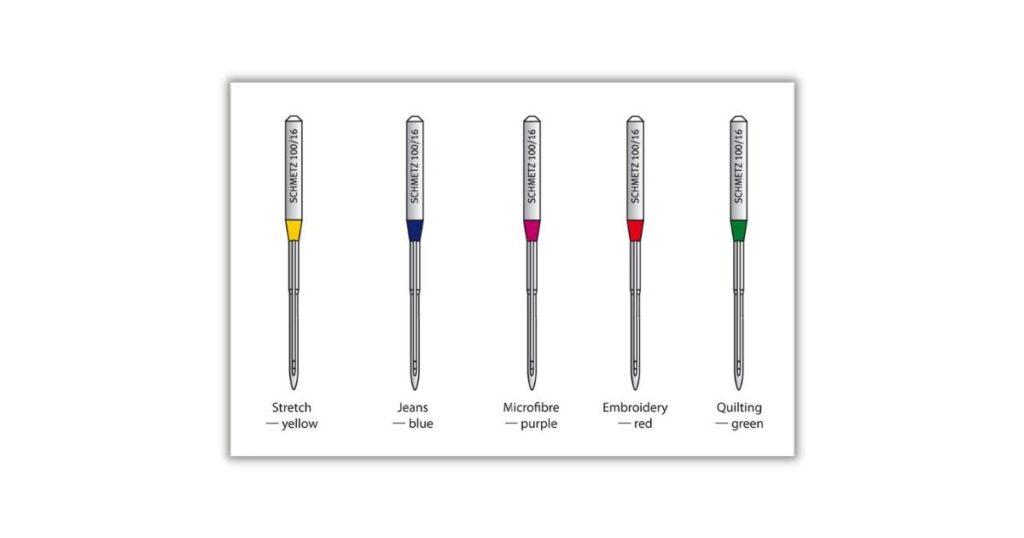
For instance, using a bigger size when sewing with lightweight material could cause fraying or skipped stitches due to too much tension being applied at once. On the other hand, using a small sized needle for heavier fabrics may result in breaking the thread more often because it won’t be able to pierce through as easily.
So understanding both the colors and sizes associated with each sewing machine needle is key to making sure your project turns out just as planned! Having access to all this information helps sewers make informed decisions about their next project and ensures that everything goes smoothly from start to finish.
What Are Sewing Machine Needles?
Sewing machine needles come in all shapes and sizes, from denim needles to jersey needles. They are essential for stitching fabrics together and creating beautiful garments with precision. Needles also play an important role in the quality of a stitch; different needle types can be used depending on the material being worked with.
The size of a sewing machine needle is determined by its diameter and length, which varies according to the type of fabric it’s meant to sew through. Jersey needles have smaller eyes than regular universal or universal stretch machines, while denim needles feature larger eyes that make them suitable for heavy-duty materials such as jeans or upholstery fabric.
Different types of needles also have different points – some pointy enough to pierce thin fabrics like chiffon, others blunter so they don’t cause damage when going through densely woven material like canvas or leather. Knowing what kind of needle you should use for your project will help ensure you achieve superior results every time.
Types Of Needles And Their Uses
Much like the colors of a painter’s palette, the various types of needles used in sewing machines serve as tools that provide different results. Depending on your project, these needles come in many shapes and sizes – each type with its own purpose.
Think of universal needles as the all-purpose brush; they can be used for almost any task but may not produce the best result. Leather needles are excellent when working with thick fabrics such as leather or canvas, allowing you to puncture through without causing damage.
Quilting needles make quick work of stitching multiple layers together while jeans needles have a strong point that allows them to penetrate heavy fabrics without bending or breaking. Last but not least is the stretch needle, designed specifically for knits and other elastic materials.
By using the correct needle for your fabric, you increase your chances of success with whatever project you’re undertaking – from quilts to upholstery. Not only does it help reduce frustration and wasted time, but it also helps ensure that your final product looks professional and lasts longer too!
Sewing Needles Color Codes And Sizes
As a seamstress, I have found that nothing is more important than the needle. Not only does it affect the quality of your stitches, but it also affects the life of your machine and fabric. Different colors on sewing needles can indicate different types of needles or specialty stitching needed for certain projects. Knowing these color codes and sizes is essential to successful sewing projects.
When you’re looking at various types of sewing machine needles, you may notice they come in different colors—from black to yellow to silver and even pink! Each color indicates a specific type of needle with its own unique purpose.
For example, a black-colored needle generally suggests general-purpose use while yellow means decorative stitching like appliquéing or embroidery. Silver needles are often used when straight stitches are involved such as in quilting or freehand embroidery designs. Pink needles tend to be less common and are typically reserved for special fabrics such as leather or denim.
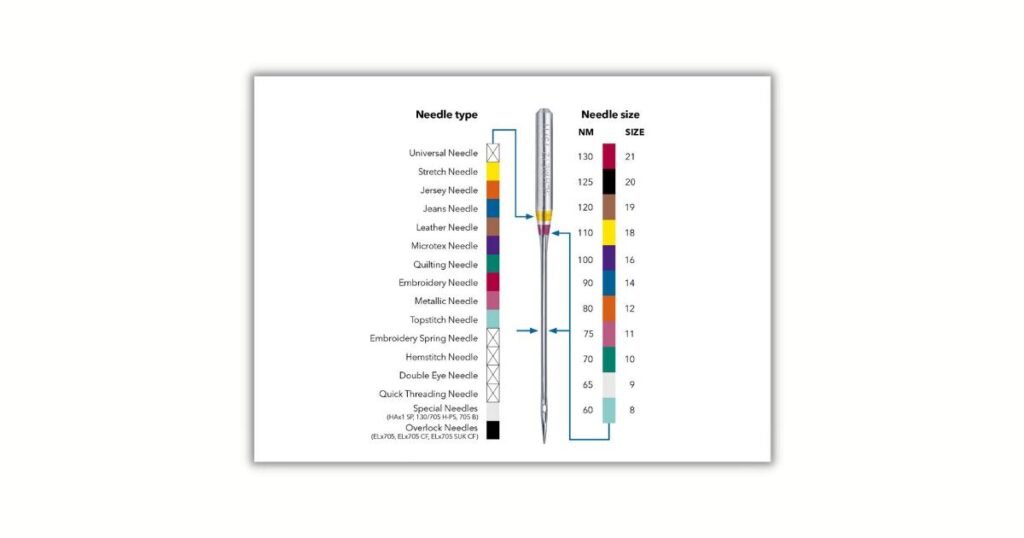
No matter what project you’re working on – from basic repairs to detailed heirloom pieces – knowing the correct color code associated with each type of sewing machine needle will ensure you get beautiful results every time. And that’s why learning about the brother needle’s color code is so important for any sewer!
SVP Worldwide Color Codes
When it comes to sewing machine needles, there are a variety of colors used for different purposes. From ballpoint needles and metallic needles to larger sizes and twin needles, understanding the color coding system is essential for creating beautiful projects that last.
Below, we’ll look at the SVP Worldwide color codes as well as Kenmore color codes so you have everything you need to make your vision come alive with fabric and thread.
The SVP Worldwide company has created its own unique needle coloring system specific to its products. Ball point needles will be yellow, metallic needles purple, metallic threads blue, larger size needle green, and twin needles pink.
This helps sewers quickly identify which type of needle they should use depending on the materials they are working with. It also eliminates any guesswork when selecting the correct needle based on what kind of project one is attempting to complete.
In addition to this code system from SVP Worldwide, many other companies also offer their own versions including Kenmore which uses black-colored needles for all types of projects regardless if one is using standard or decorative stitches.
While each brand may vary slightly in terms of what colors represent certain kinds of fabrics or techniques, following both sets of guidelines can ensure one’s work stands out without sacrificing quality or longevity. With these two systems side by side, you’ll be able to find just the right needle for any job no matter how small or large it may be! Moving forward, let’s take a closer look at the Kenmore color codes…
Kenmore Color Codes
Choosing the right kind of needle for your sewing machine is like finding a key to unlocking creativity. Kenmore color codes are used as an easy guide to help you identify the best needle type, depending on your project and the types of fabric.
The general rule is that blue needles (with a white color band) are designed for light-medium weight fabrics such as silk or chiffon, while red needles (with a yellow color band) are suitable for medium/heavyweight fabrics such as denim or canvas.
However, there are more than just two colors: green needles with purple bands signify stretch needles and can be used for any type of knit fabric; orange needles with black bands denote leather needles which should only be used when working with leather materials; finally, American sizing has its own special set of colors ranging from size 8 (red & white) to 18 (black & white).
No matter what kind of needle you choose it’s important to remember that proper tension is essential for achieving great results. While each type of needle has its own unique color code, they all have one thing in common – choosing the wrong kind can lead to unsatisfactory outcomes or even damage your fabric and/or machine. Understanding Kenmore’s color codes will ensure that you make the right choice every time!
Are Sewing Machine Needles Color Coded?
The art of sewing is a complex and intricate pattern – with various colors, sizes, and types of needles all playing their part. Are sewing machine needles color coded? The answer is yes! Each needle type has its own unique color code that can help identify the specific uses for each one.
To break it down further: ballpoint needles are typically blue in color; sharp needles are green or orange; topstitch needles have a yellow hue; and larger needle types usually appear black. It’s important to note that these colors may vary depending on the manufacturer, so always refer to your user manual if you’re unsure.
Regardless of what kind of project you’re working on, knowing which needle type works best will ensure quality results every time. For example, using a sharp needle for fabric such as silk or chiffon will provide neat stitches without any snagging or damage to the material. Similarly, when tackling thicker fabrics like denim or canvas, selecting a larger size needle would be more appropriate.
In short, understanding the basics of different colored sewing machine needles and how they work together helps sewers achieve successful projects from start to finish.
Brother Needles Color Code
It is widely believed that Brother needles have a specific color code. But do they really? To find out, let’s dive into the details of what each color means and how it helps with different types of fabrics and sewing techniques.
When we look at needle type, there are several distinct colors associated with Brother needles – red for universal needles, blue for embroidery needles, and green for quilting needles. The most common use for these colored Brother needles is to make sure you choose the right needle when working on heavy fabrics such as denim or canvas.
For example, if you’re using an embroidery machine, then the blue embroidery needle should be used because its larger eye allows threading multiple strands easily. On the other hand, if you’re stitching through lightweight fabric like cotton or silk, then the red universal needle can handle both straight and zigzag stitches easily due to its sharp point and smaller size.
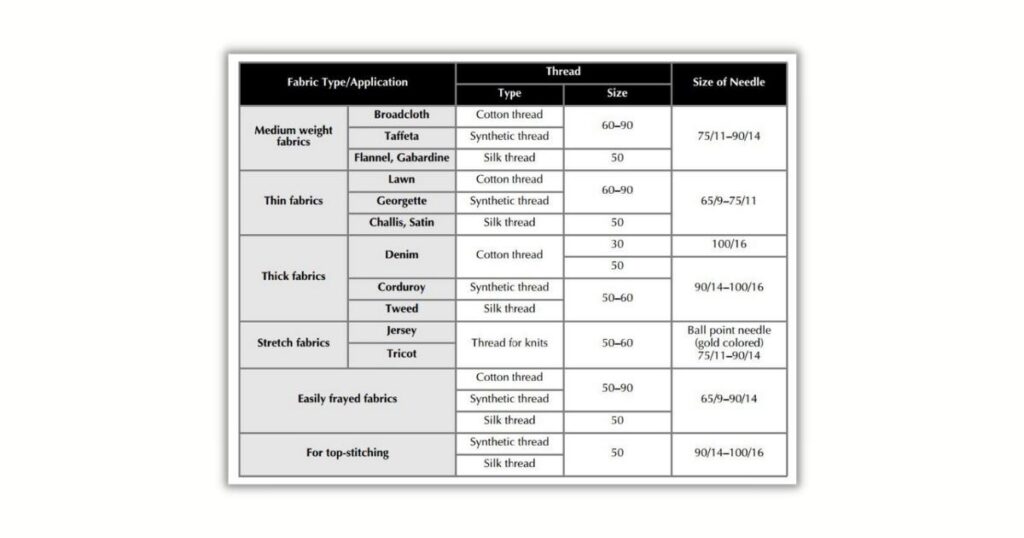
Another key factor here is understanding which type of fabric needs which kind of needle in order to create strong stitches without damaging the material. This is where things get interesting: while some materials require a thicker needle (like upholstery fabric), others need thinner ones (such as chiffon).
Moreover, certain fabrics also need specialty needles depending on their construction – this includes leather as well as stretchable fabrics such as spandex or Lycra®.
Finally, once you’ve chosen your correct needle type based on your project requirements, remember to secure it properly by tightening the screw on the top of your machine’s needle clamp before starting any work!
So while many believe that Brother has a specific color-coded system for their needles, choosing the right one actually requires careful consideration about what type of fabric you’ll be working with and what sewing technique will best suit your project’s needs.
Organ Needle Color Code
What lies beneath the surface of sewing machine needles? It may be hard to believe, but these seemingly simple objects can reveal a surprisingly complex story. To understand them better we’ll take a closer look at the Organ Needle Color Code — what types of needles are available and how they vary by color.
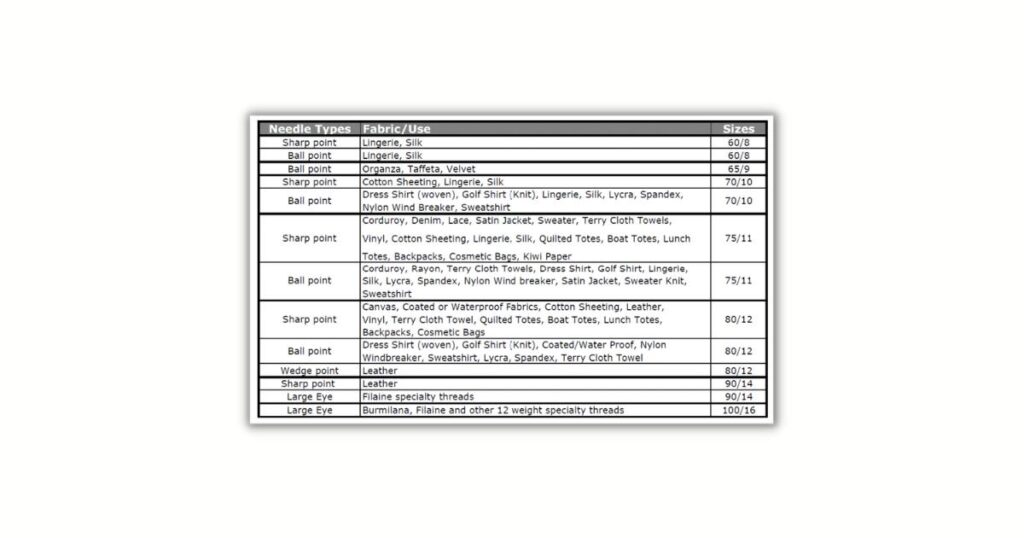
The type of needle you use is dependent on the type of sewing machine you’re using: domestic or industrial. Domestic machines require smaller diameter needles than industrial machines. They also have different points designed for specific fabrics, like denim or canvas. Depending on the material being used, there are two main colors that indicate which should be chosen:
- Silver/gray – this indicates thinner threads and softer materials such as lightweight cotton and silks;
- gold/yellow – thicker thread and heavier fabrics such as leather, vinyl, and heavyweight cotton blends;
- brands of color – most specialty needles don’t come in either silver or yellow; instead, they feature bands (sometimes multiple) of color indicating their intended purpose.
No matter what kind of needle you’re looking for, understanding organ needle color code can provide valuable insight into its uses and capabilities when it comes to working with various fabrics – from lighter-weight silks to thick leathers and everything in between! By recognizing the differences between each band’s colors, users can select the right tool for any job quickly and easily without having to guess which one might work best.
Singer Needle Color Code
Singer needles are used in many different types of sewing machines and come with their own color-coded system for easy identification. This code helps seamstresses quickly identify the type of needle they need to use for various projects from lightweight fabrics like silk to heavy-weight fabrics like denim.
The Singer needle color code includes:
Needle Type
The first layer of coding identifies the type of needle, such as universal or denim.
- Universal: These needles have a slightly rounded point that can be used on lightweight and stretch fabrics.
- Denim: These needles have a sharp point designed specifically for heavier layers of fabric.
Fabric Weight
The second level of coding indicates which fabric weights should be sewn with each particular type of needle.
- Lightweight Fabrics: For lightweight materials like silk, rayon, chiffon, and georgette, look for a light blue-colored band around the base of your needle packaging.
- Stretch Fabrics: When working with elastic knitwear or spandex, you’ll want to find a purple-colored band on your Singer sewing machine needles.
- Heavy Weight Fabrics: If it’s time to sew through several layers of thick material (like denim), search out the orange bands wrapping these specialized Singer needles.
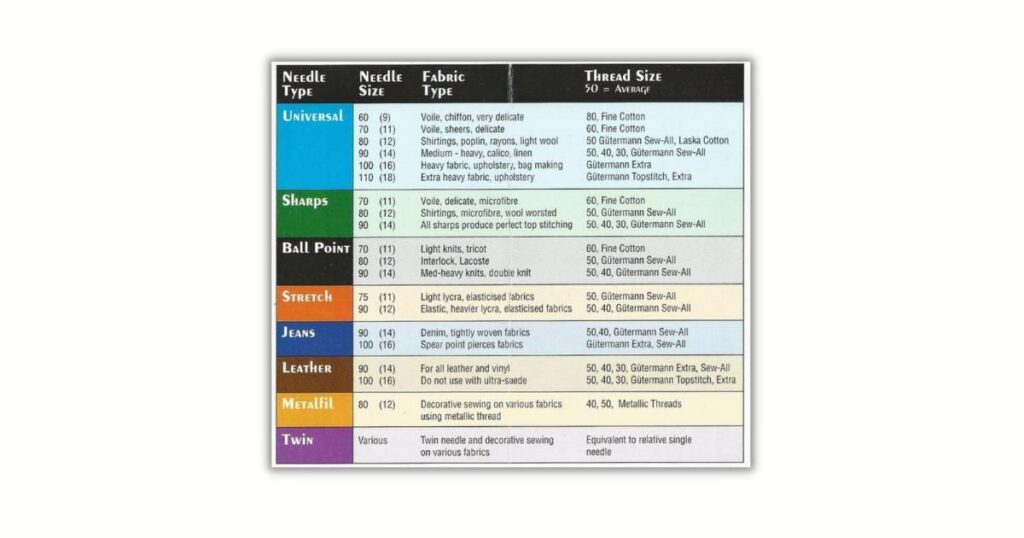
Knowing how to read the Singer needle color codes will help any seamstress determine what kind of needle is best suited for her project without having to guess at its capabilities—saving both time and frustration!
How To Identify Sewing Machine Needles?
Are you struggling to identify the correct needle for your project? Understanding the different types of sewing machine needles and their color codes will help you select the right one for your fabric.
The size of a needle is determined by its diameter and length, which vary depending on the type of material being sewn.
For heavier fabrics such as denim or canvas, choose a larger size with a longer shank; for lighter fabrics like silk or chiffon, opt for a smaller size with a shorter shank. As far as decorative stitches go, use an even larger size needle (often labeled “embroidery”) that has a bigger eyelet to accommodate thicker threads.
Knowing when to switch out your old needle can also be helpful in keeping your projects looking perfect. When using heavy-duty materials or working on multiple layers of fabric, it’s important to replace the needle after 8 hours of stitching as these needles won’t last forever and may cause skipped stitches if used too long.
By understanding how each type of needle varies in shape and size, sewers can easily pick the best one for their current project – no matter what kind of fabric they’re working with!
Are Sewing Machine Needle Colors Universal?
While it may be tempting to assume that the colors of sewing machine needles are universal, this is not necessarily true. Each type of needle has its own color code which can vary from one manufacturer to another. Knowing what each color represents and understanding how they relate to different types of fabrics is essential for successful stitching projects.
When selecting a needle, you should consider the type of fabric you will be using: heavier materials such as denim or artificial leather require stronger needles than lighter fabrics like silk or stretchy fabrics.
There are four common types of domestic sewing machine needles
- Universal (for general-purpose use).
- Ballpoint (for knitwear and other stretchy fabrics).
- Denim (for thicker woven material), and Leather (for thick material).
The size range typically starts at 8/60 going all the way up to 18/110 depending on your project requirements.
The colors on these needles usually refer to their size but again, there may be variations between manufacturers so it’s important to check before making your purchase.
For example, some brands might use yellow for 10/70 while others could use green instead, so always double-check the description when purchasing needles online or in-store. With these tips in mind, you can ensure that you select the right needle every time for your next sewing project!
What Happens If I Use The Wrong Size Needle?
On the surface, it may seem that knowing which colors on a sewing machine needle mean what is all you need to worry about. But what happens if you use the wrong size needle? Well, let’s find out! Firstly, when selecting your needle type, there are three important factors to consider:
- The shape of the point;
- The thickness and length of the shaft;
- And lastly, its size. If you choose incorrectly, then the consequences can be significant – from minor issues such as skipped stitches or broken threads to more serious ones like damaged fabric or even injury to yourself.
Secondly, while each color signifies something different in terms of meaning – with blue representing denim needles and yellow indicating stretch fabrics for example – they also indicate size too. So if you fail to pay attention to this aspect then chances are your stitches won’t hold properly and this could cause problems with your project.
Finally, no matter how well-intentioned we are in our efforts at picking out a suitable needle for our sewing machine, sometimes things don’t always go according to plan. In short, make sure to check both the colors and sizes when buying needles so that you get exactly what you need for your projects – not just what looks good!
Which Brands Are Best?
When it comes to sewing machine needles, there are many brands on the market. It can be difficult to decide which one is best for you and your project. To make the decision easier, it’s important to consider the type of needle and the colors associated with them.
The most common types of needles used in sewing machines are universal, micro tex/sharp, ballpoint, topstitch, stretch twin needles, and quilting needles. The colors on a sewing machine needle represent its size – red being larger than blue or green. Each brand will have different sizes available but they all usually follow this color scheme.
In terms of quality, some brands may provide better results than others due to their construction or design features; however, these differences can be subtle so it’s worth experimenting with different brands to find out which works best for you.
Types of fabric
Ultimately though, as long as you choose an appropriate needle type based on your fabric and thread weight then any good quality brand should do the job! As we move on to discussing thread weight and needle size next, keep in mind that choosing the right combination of both is essential for success when using a sewing machine.
Thread Weight And Needle Size
Sewing starts with selecting the right needle and thread. Thread weight, size, and type of sewing machine needles all play a pivotal part in producing successful projects. Crafting creations can take on complex curves when using the correct supplies.
Thread needs to be compatible with both the fabric choice and the needle type. For instance, lightweight fabrics require finer threads while heavier materials need thicker threads for stitching success.
Needle size also varies depending on the user’s project demands; smaller sizes are used for delicate fabrics such as silk, whereas larger needle types work better for heavyweight fabrics like denim.
Furthermore, choosing an appropriate needlepoint is essential: universal points are suitable for most applications but other specific points may be needed if certain stitches or fabrics are involved.
The colors associated with sewing machine needles indicate their size and type – orange-tipped needles have a medium ballpoint tip designed to go through woven fabrics easily without damaging them, while blue-tipped ones possess a sharp cutting point ideal for piercing leather goods and multiple layers of heavy material.
With so many different options available it’s important to choose wisely – read labels carefully, consult your manual guide or speak to the knowledgeable staff at your local craft store before making any purchase decisions!
TIP: Take time to select the right combination of thread weight, needle size, and needle type that works best for each individual project you undertake – this will ensure that no matter what fabric you’re working with, everything from fine silks to thick denim will look professionally tailored every time!
Conclusion
In conclusion, understanding the color codes on sewing machine needles can be confusing for some. But once you understand what the colors mean and how to select a needle based on its size and type of fabric, it becomes easier. As someone who has been working with their sewing machine for years now, I can tell you that having the right needle is essential in order to get perfect results every time.
The best way to ensure that you’re using the correct needle is to read up on all brands before making your purchase. Different manufacturers have different systems for sizing and coding their needles, so it’s important to know which one works best for your project.
FAQs
What are the 7 different types of sewing needles?
The seven different types of sewing needles are universal, ballpoint, stretch, denim/jeans, leather, quilting, and topstitch. Each type is designed for a specific purpose and should be used accordingly.
What do the colors on sewing machine needles mean?
The colors associated with sewing machine needles indicate their size and type. Orange-tipped needles have a medium ballpoint tip designed to go through woven fabrics easily without damaging them, while blue-tipped ones possess a sharp cutting point ideal for piercing leather goods and multiple layers of heavy material.
What needles are best for beginners?
For beginners, universal needles are the best choice as they are suitable for most applications. They come in a variety of sizes and can be used on a wide range of fabrics. Ballpoint needles are also good for beginners as they have a rounded tip that helps prevent the fabric from being damaged when stitching.
What color is a 90 14 needle?
A 90 14 needle is typically blue-tipped, indicating that it has a sharp cutting point ideal for piercing leather goods and multiple layers of heavy material.
Which needle is best for stitching?
The best needle for stitching depends on the type of fabric you are working with. Universal needles are suitable for most applications, while ballpoint needles have a rounded tip that helps prevent the fabric from being damaged when stitching. For heavier fabrics such as denim or leather, a sharp-tipped needle is recommended.
What are 80 12 needles used for?
80 12 needles are typically orange-tipped, indicating that they have a medium ballpoint tip designed to go through woven fabrics easily without damaging them. These needles are ideal for lightweight fabrics such as silk and chiffon.
